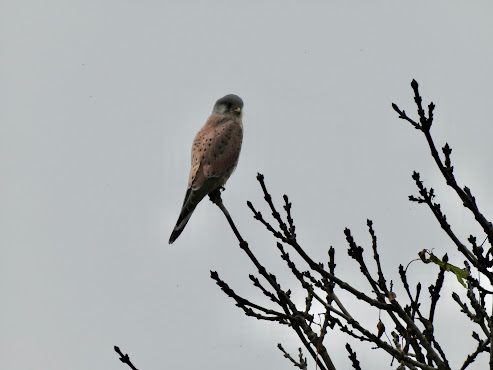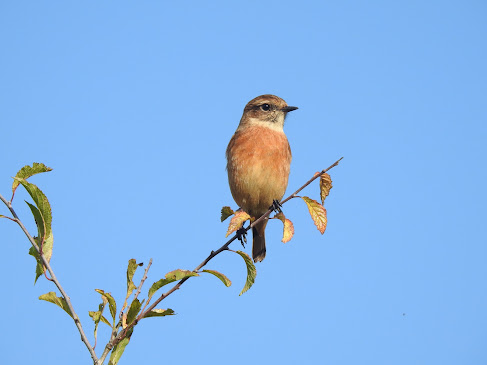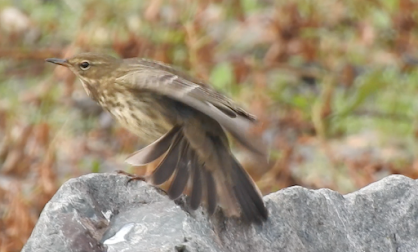I fancied a change this morning, so went to Kinwarton near Alcester. With bad weather on the horizon I thought this might be the last still day for a while.
Parking at the Dovecote I first investigated the small pool there. The headline act was a singing Cetti's Warbler, with a squealing Water Rail as support. Unfortunately neither showed themselves. The pool itself contained only a few Moorhens, a family of Mute Swans, and two Little Grebes. One of the latter seemed to be chasing flies around, and eventually I tried to film it doing so.
There was a good selection of the usual common birds around, and it sounded as though some of them were mobbing an Owl. As usual I couldn't spot it.
Speaking of owls, one reason for my visit here was the presence last year of a Little Owl, the only one I now know of locally. Sadly the tree it prefers was still in full leaf, so I couldn't tell whether it was still there.
My route took me to the edge of Alcester and back, but I didn't see a lot. A couple of Yellowhammers flew over a large field, and a Kestrel showed well despite the gloomy light.
 |
| Male Kestrel |
Eventually I was back where I started, except that I took a right fork to try to find a small pool where I had seen a Pintail last year. I never quite made it to the pool but was diverted by a pair of Parakeets. The calls sounded different to the normal Ring-necked Parakeet sounds, and I suspected something else. Sure enough they flew past, a big one and a small one. I rang John Coombes as I was on his patch and he confirmed my suspicion that they were a pair of Alexandrine Parakeets which have been there for months.
I had also heard "another" Cetti's Warbler. John was surprised by this, and I must admit that when I returned to the Dovecote Pool there was no sign of one there. So maybe it's just one highly mobile bird.
In the last few minutes the sun showed signs of coming out. A swirl of birds from behind some trees proved to be a flock of 220 Starlings, but I couldn't see what had disturbed them. To finish up I tried to photograph a Fieldfare which was perched on a tree-top.
 |
| Fieldfare |
Having failed on the Owl at least gives me the excuse to return once the leaves have dropped. Its actually a nice area to birdwatch in.








.jpeg)


























